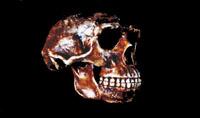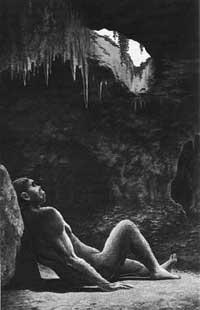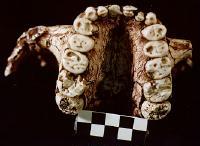New branch of the family tree of the genus Homo
1997/07/01 Elhuyar Zientzia Iturria: Elhuyar aldizkaria
As paleontologists and neontoologists know, finding a new species is not easy. However, the more abundant the being is, both in the specimens and in the species, the easier it is to find a new species of this type of beings, and vice versa. Therefore, finding a new species of insect is easier than finding a new primate.
Once a new species is defined, the relationship between it and its relatives is established to know which species the new species has evolved. The way to evolve is usually considered linear, that is, when creating new species, the original species disappeared. However, in recent decades, paleontological studies have shown that the evolution of species is not linear, but as a tree. Thus, some individuals of an original species can transform and form a new species while others continue to be the original species. Consequently, the species of origin and that of daughter can live in the same time. This is easily acceptable to all species, except for the human being. However, the advances of the last decade have made it clear that human evolution has not been linear, but complex and ramified. A consequence of this complexity is the coexistence of several human species.
Considering what was said at the beginning, it is said that it is very difficult to find a new human species. For this, a rich deposit and a great job are needed. This is the case of the “Gran Dolina” site in Atapuerca, north of Burgos. This human bone deposit, the oldest in Europe, is rich in samples in which the bones of six humans of the lower Paleolithic have already been found. Its physical characteristics are very special, so the researchers have defined a new species of Homo antecessor. Probably in Africa, this species born 800,000 years ago lived in the north of the Iberian Peninsula. The findings are bones of young individuals that appear next to bones of other animals in the site. These bones show that someone willingly removed the meat through stone tools. It is possible that these remains are remains of human food and, consequently, we are witnesses of cannibal activities.
Homo predecesessor had a modern face, a fine and long nose, but the chin, forehead and volume of the skull are extremely primitive. Therefore, it jointly shows the characteristics of primitive and modern man. According to these characteristics, H. antecessor was born from H. ergaster and gave two new branches. Thus, some Homo predecessors gave the Homo heidelbergensis evolving and other predecessors created the current Homo sapiens in Africa. It should be noted that Homo heidelbergensis lived 300,000 years ago in the Middle Paleolithic of Atapuerca. Remains of 32 human beings of this species have been found in the “Sima de los Bones”, the richest of this age in Europe.
Finally, H. heidelbergensis gave evolution 150,000 years ago to the famous Homo neanderthalensis. Accordingly, the Homo sapiens emerged from a branch of predecessor and the H. neardenthalensis emerged from heidelbergensis lived in the same time and disputed the same region. As a result of this contest or for another reason, H. neardenthalensis was destroyed 28,000 years ago and Homo sapiens stayed alone. This situation of solitude is absolutely atypical, since in the history of human beings there have been several species that have lived during the same time.

Gai honi buruzko eduki gehiago
Elhuyarrek garatutako teknologia





